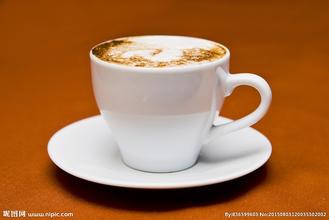Peruvian coffee flavor description with strong aroma introduction to the taste characteristics of fine coffee varieties
In 1542, the Spanish royal family set up the Government House in Lima and established the Governor's District of Peru, which became the center of Spanish colonial rule in South America. At that time, Peruvian commerce was prosperous, merchants controlled most of South America's import and export trade, and the precious metals and other goods looted by the Spaniards from South America were shipped out of Peru. The colonists seized land wantonly in Peru and forced the "Mita system", forcing the Indians to engage in slave labor in the mines, resulting in a large number of Indian deaths. In order to oppose Spanish colonial rule, the Indians held many uprisings, including the Manco uprising in 1535, the Juan Santos uprising in 1742 and the Tupac Amaru uprising in 1780-1781. Mount Coropuna and Mount Salcan are all more than 6000 meters above sea level. Mount Vascalan is 6768 meters above sea level, the highest point in Peru. The main rivers are the Ukayari River and the Putumayo River. The southern part of the central part is volcanic with frequent earthquakes, and Lake Titicaca, which is the second largest lake in South America, lies on the southeast border with Bolivia. The northern part of the center contains oil along the coast and offshore. Offshore waters are rich in fishery resources such as anchovy (Peruvian sardines), and there are a large number of guano layers in the coastal islands. The forest area accounts for 51% of the territorial area, rich in mining resources, and is one of the top 12 mining countries in the world. There are mainly copper, lead, zinc, silver, iron and oil. The reserves of bismuth and vanadium rank first in the world, copper ranks third, silver and zinc fourth. The proved reserves are 400 million barrels of oil and 7.1 trillion cubic feet of natural gas. Forest coverage is 58%, with an area of 77.1 million hectares, second only to Brazil in South America. Rich in hydraulic and marine resources, rich in fishery resources, and the output of fishmeal is among the highest in the world.
As a rising star in the coffee industry, Peruvian coffee is gradually opening up its popularity and entering the international market. Peruvian coffee has always been used as one of the stable and mellow mixed beans of comprehensive coffee. Peruvian coffee has a mellow taste and the right acidity, and this lukewarm coffee attitude has made more and more people like it.
Peru is located in western South America, with a coastline of 2254 kilometers. The Andes runs from north to south, and the mountains account for 1% of the country's area. it belongs to the tropical desert region with a dry and mild climate. Peruvian coffee is mostly grown at the foot of the Andes, where it is rich in traditional Central American top coffee beans.
Peru is a huge and diversified land for them to produce a large number of different kinds of coffee beans, Peru can produce very high-quality Peruvian coffee. In general, these coffee beans have the gloss of Central America, but they are all packaged in South American flavor. High-quality organic venues do have more rural coffee characteristics. As long as these coffee beans continue to add interesting flavors rather than weaken them. Such a cup of Peruvian coffee has all the bright and deep tastes. When a cup of ordinary Peruvian coffee is in your hand, you don't have to try to taste whether it is good or not.
Peruvian coffee beans are best known for their coffee beans from Chimacha Mayou in the middle and Cusco in the south. In addition, some areas in northern Peru also produce characteristic organic coffee. Organic coffee is made of beans grown in the shade of trees. Although the yield of coffee beans is not high because of the method of planting in the shade, its quality can reach the level of gourmet coffee. This is because shading trees can slow down the ripening of coffee trees, help coffee grow fully, make it contain more natural ingredients, breed better flavors, and reduce caffeine content.
Peruvian coffee is grown in a planned way, which has greatly increased coffee production. Its rich acidity and mellow smoothness are its most prominent features. Peruvian coffee has a soft sour taste, medium texture, good taste and aroma, and is an indispensable ingredient in the production of comprehensive coffee. High-quality Peruvian coffee, with strong aroma, smooth, layered, rich sweet, elegant and mild sour taste, will quietly awaken your taste buds.
Compared with high-quality organic Peruvian coffee, the difference between ordinary organic Peruvian coffee and high-quality organic Peruvian coffee is huge: relatively cheap beans are not only poor in quality, but often have obvious defects in the cup. Especially the grass flavor, overfermented flavor. It takes a lot of work to find good Peruvian coffee beans among a lot of middlemen or other people who can buy them. However, it also takes a lot of hard work to pick sample beans. But that's better than working hard in piles of papers.

Important Notice :
前街咖啡 FrontStreet Coffee has moved to new addredd:
FrontStreet Coffee Address: 315,Donghua East Road,GuangZhou
Tel:020 38364473
- Prev

Introduction to Coffee Coffee with particularly mellow Flavor description characteristics in producing area
The company M.P. Mountanos, which first introduced Kopi Luwak coffee to the United States, pointed out that at first, when I heard about this kind of coffee fermented in the body, I thought it was a joke in the industry, but I didn't take it seriously. later, I saw a special report on Kopi Luwak in National Geographic Magazine and became interested in her. it took seven years to find a stable source of supply and began to introduce a small amount to the United States.
- Next

Cuban Crystal Mountain Coffee Flavor description Variety producing area characteristics introduction to the taste of high-quality coffee beans
The longest river in Cuba, the Ro Cauto, is 370km long. [1] Cuba has more than 200 rivers and thousands of streams, most of which run north-south, so the current is shallow and fast. The Cato River, which flows east-west to the north of the Maestra Mountains, is the largest river in Cuba, but it is only 370 kilometers long and is the only navigable river in Cuba. Cuba's coastline is tortuous and average.
Related
- Detailed explanation of Jadeite planting Land in Panamanian Jadeite Manor introduction to the grading system of Jadeite competitive bidding, Red bid, Green bid and Rose Summer
- Story of Coffee planting in Brenka region of Costa Rica Stonehenge Manor anaerobic heavy honey treatment of flavor mouth
- What's on the barrel of Blue Mountain Coffee beans?
- Can American coffee also pull flowers? How to use hot American style to pull out a good-looking pattern?
- Can you make a cold extract with coffee beans? What is the right proportion for cold-extracted coffee formula?
- Indonesian PWN Gold Mandrine Coffee Origin Features Flavor How to Chong? Mandolin coffee is American.
- A brief introduction to the flavor characteristics of Brazilian yellow bourbon coffee beans
- What is the effect of different water quality on the flavor of cold-extracted coffee? What kind of water is best for brewing coffee?
- Why do you think of Rose Summer whenever you mention Panamanian coffee?
- Introduction to the characteristics of authentic blue mountain coffee bean producing areas? What is the CIB Coffee Authority in Jamaica?

